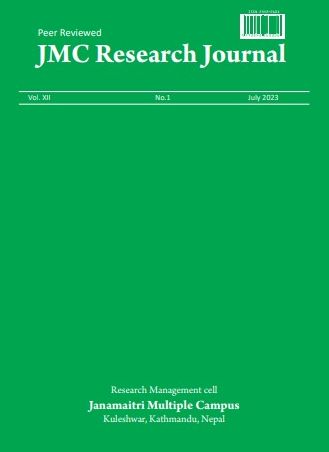Employee Training Practice in Nepalese Health Sector and Organizational Performance
DOI:
https://doi.org/10.3126/jmcrj.v12i1.61624Keywords:
On-the-Job training, Off-the-job training, health, performance, correlation, efficiencyAbstract
The paper examines the impact of training, gender, job tenure, and effectiveness of training methods in the health sector in Nepal. Fifty-five point five percent of health personnel belong to private hospitals, 32.7 percent to government hospitals, and 11.7 percent to community hospitals. The mainstream of the respondents (206) showed that on-the-job training is more effective than off-the-job training (176). According to the findings of the data analysis, Job Instruction is the most effective method in On-the-Job Training, followed by Internship, Incident Methods, Case Studies, Lectures, and Audio-Visual Techniques in Off-the-Job Training. The analysis found that health personnel with experience of more than 25 years contribute the most to organizational performance, regardless of gender. Training and organizational performance are highly correlated, suggesting that experience and training are highly correlated. On-the-job and off-the-job training methods are highly correlated, with a correlation of 0.415 and a p-value of 0.027. Audio Visual Techniques and Incident Methods are also highly correlated at the 0.01 level (2-tailed). Lastly, the paper shows that 246 respondents have taken training related to the Case Study, 240 to the Lecturer method, 135 to the Simulation, and 162 to other training not mentioned in the analysis.

